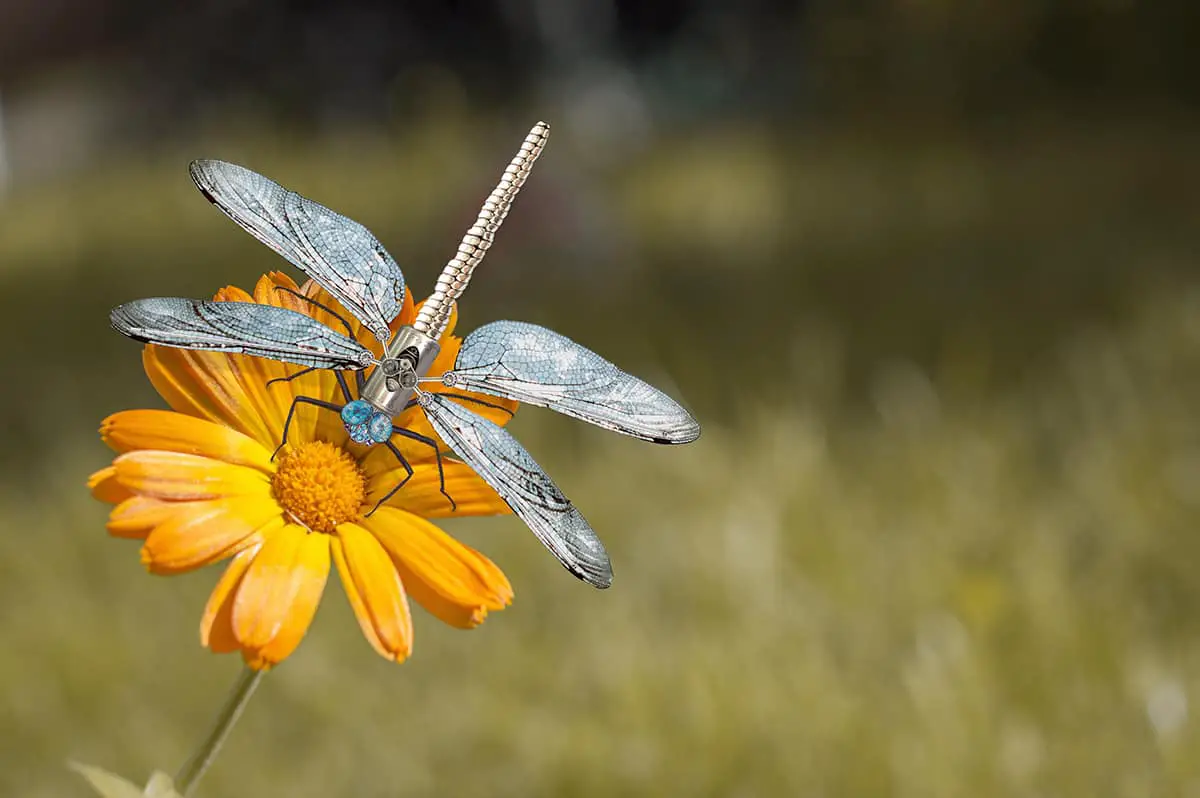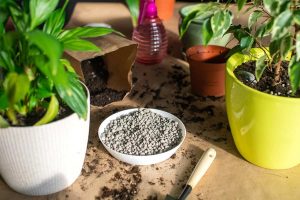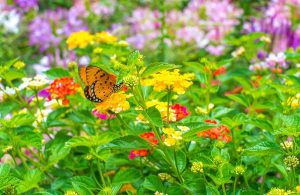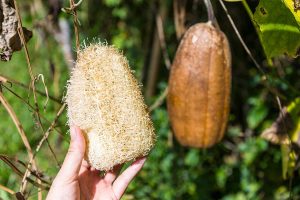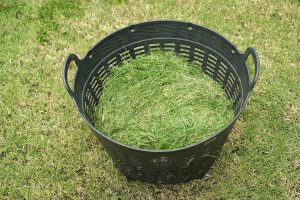Are you looking to attract dragonflies to your garden? Including specific plants in your landscape can help make your garden a haven for these fascinating insects. Dragonflies are not only beautiful and fascinating to watch, they also play a crucial role in controlling mosquito populations by feeding on the larvae.
As you plan your garden layout, remember that dragonflies need water sources and native plants to thrive. An added benefit of designing your garden to attract them is that many of the plants they love will also draw in other helpful insects and pollinators, further enhancing your garden’s ecosystem. Just be patient, as it may take some time for the dragonflies to arrive and establish themselves in your new garden sanctuary.
Table of Contents
Arrowhead

Arrowhead (Sagittaria latifolia) is an aquatic perennial plant that attracts dragonflies to your garden. It is also known as duck-potato and grows above the water level. This plant provides an ideal nursery for dragonflies, making it a popular choice for water gardens.
Dwarf Sagittaria
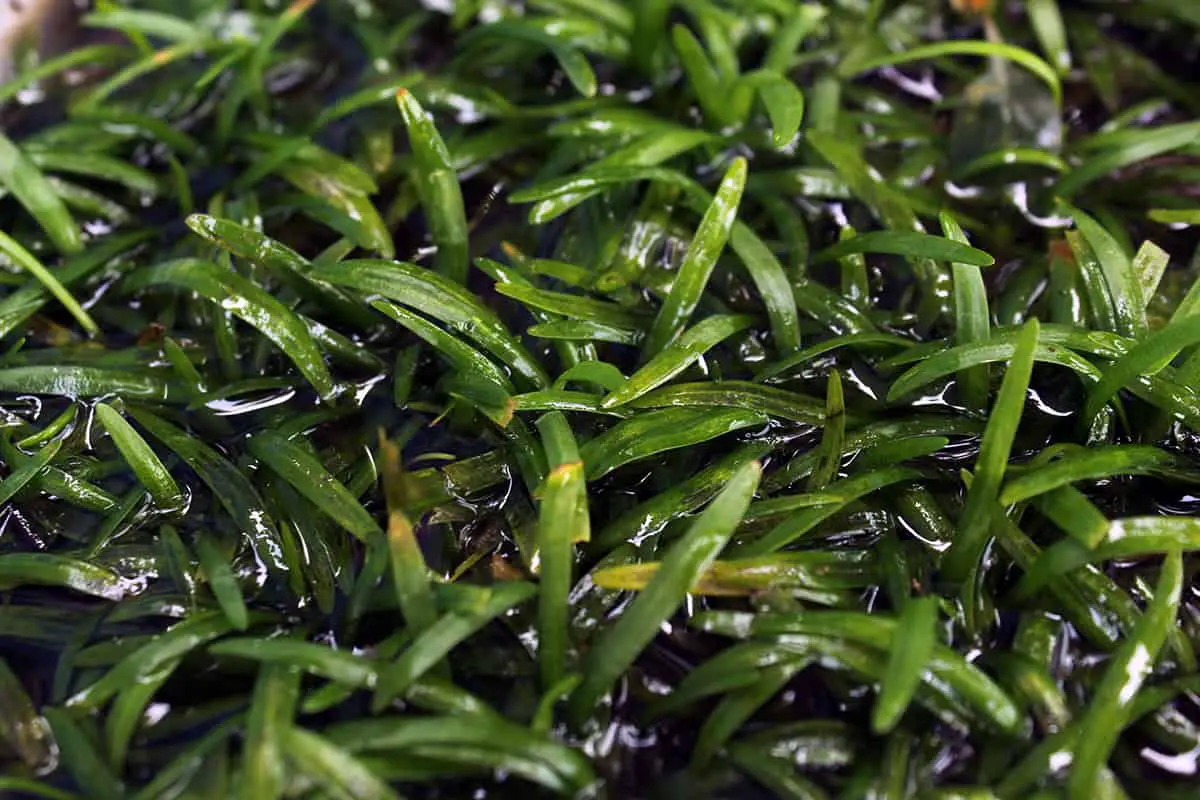
Dwarf Sagittaria (Sagittaria subulata) is a smaller variety of Arrowhead, which is another great plant to help attract dragonflies. It is a submerged vegetation that grows well in USDA plant hardiness zones 6 through 10. This plant offers a place for nymphs to rest and find food, supporting a thriving dragonfly population.
Dwarf Sagittaria is an easy-care plant and can be planted in containers or directly in the pond. It prefers full sun to part shade and can tolerate a range of water depths. To grow Dwarf Sagittaria in your water garden, plant it in a pot with aquatic soil and cover the surface with pea gravel.
Black-Eyed Susan
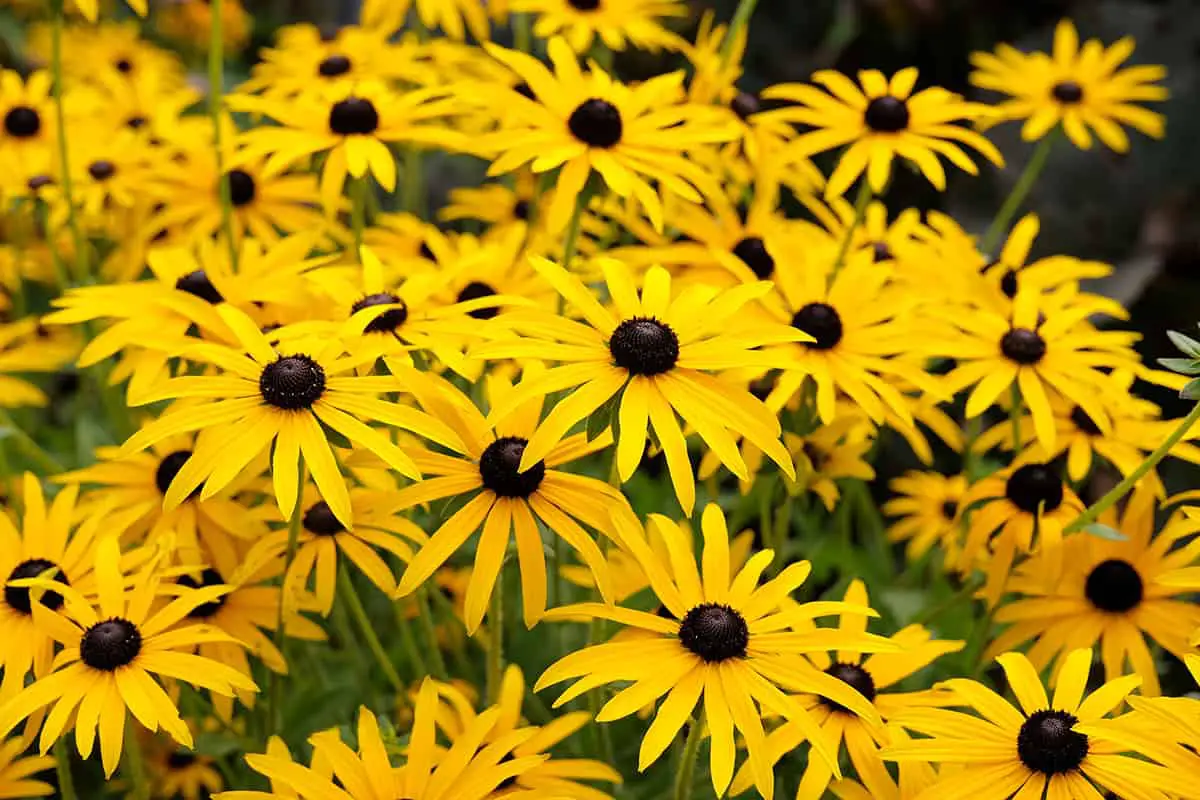
Black-Eyed Susan (Rudbeckia hirta) is a popular plant known for its large, distinctive flowers. This beautiful plant, also called coneflower or gloriosa daisy, can unlock numerous benefits in your garden.
For one, it serves as a magnet for dragonflies. Your garden will benefit from these insects’ natural pest-control abilities. Dragonflies are known to eat mosquitoes and other unwanted pests, making this plant a great choice to keep your outdoor space more enjoyable.
To grow Black-Eyed Susans, you need a spot with full sun. These plants can grow up to 6 feet tall, with dwarf strains reaching 1 to 2 feet. They are hardy and can thrive in USDA Zones 3 to 9.
In addition to attracting dragonflies, Black-Eyed Susans also draw other pollinators. Bees and butterflies love the vibrant flowers, promoting overall biodiversity in your garden. With just a few of these plants, you’ll create a lively ecosystem where both plants and pollinators thrive.
Borage

Borage (Borago officinalis) is an excellent plant to attract dragonflies to your garden. It is an annual herb that produces lovely star-shaped blue flowers. These flowers are not only beautiful, but they also serve as a valuable nectar source for dragonflies and other beneficial insects.
To grow borage, choose a sunny location with well-draining soil. It’s advisable to plant seeds directly in the ground after the last frost. Borage is relatively low maintenance, requiring only occasional watering and little to no fertilization. It can grow up to 2-3 feet tall and will self-seed readily, ensuring its presence in your garden for years to come.
The benefits of borage go beyond attracting dragonflies. Its leaves and flowers are edible and can add a mild cucumber flavor to various dishes. Moreover, borage is a popular companion plant, known for repelling pests like tomato hornworms and cabbage worms.
Cattail
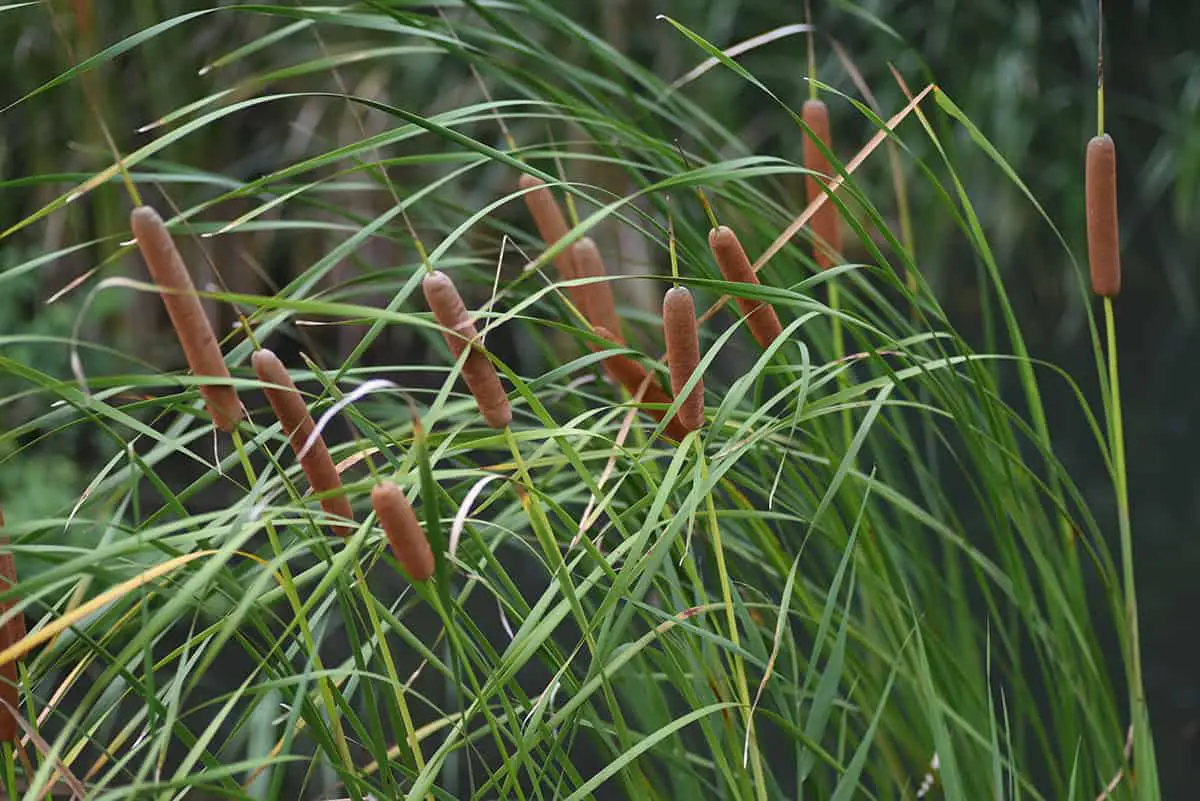
Cattail (Typha) is a perfect plant to have in your garden if you want to attract dragonflies. It thrives in wet environments, such as ponds or marshes. This versatile plant can grow up to 9 feet tall with long, slender, grass-like leaves.
Cattails produce distinctive brown, cigar-shaped flowerheads, which can be easily recognized. They bloom from late spring to early fall and offer plenty of hiding spots for dragonflies. This also helps to protect their larvae from potential predators.
When planting cattails, ensure your garden has a suitable water source, as these plants love moisture. Aim to plant them in shallow water or around the edges of your pond. The best part is that cattails provide a habitat not only for dragonflies but also for other beneficial aquatic species.
Fanwort
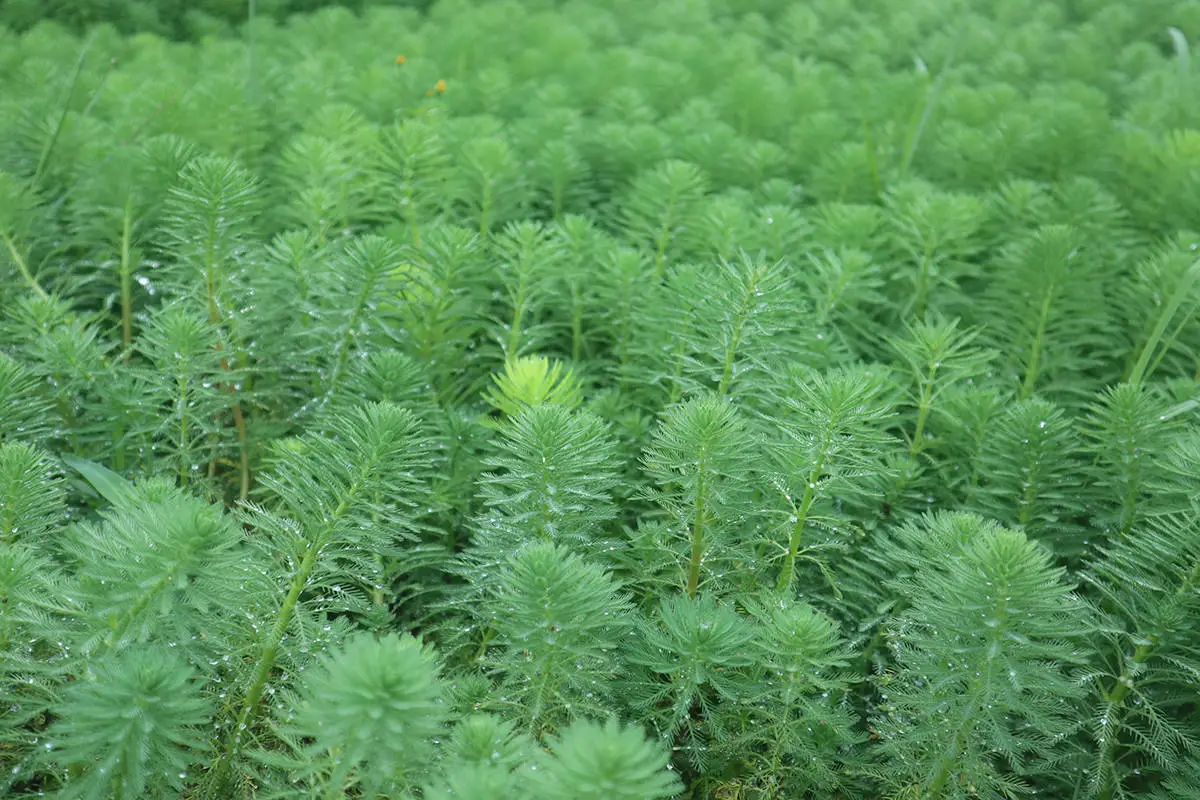
Fanwort (Cabomba caroliniana) is a perennial aquatic plant that attracts dragonflies. It grows fully submerged, except for its delicate white flowers. Female dragonflies tend to deposit eggs on the stems and undersides of fanwort.
This plant thrives in ponds and other water bodies. To attract dragonflies to your garden, you can add fanwort to your pond. It will not only serve as a breeding ground for dragonflies but also provide a healthy aquatic environment.
Fanwort is an oxygenator, which means it adds oxygen to the water, improving water quality. Your pond will host healthier fish and have clearer water, creating a welcoming habitat for dragonflies. Remember to keep your pond free of debris to ensure fanwort can flourish.
Giant Coneflower
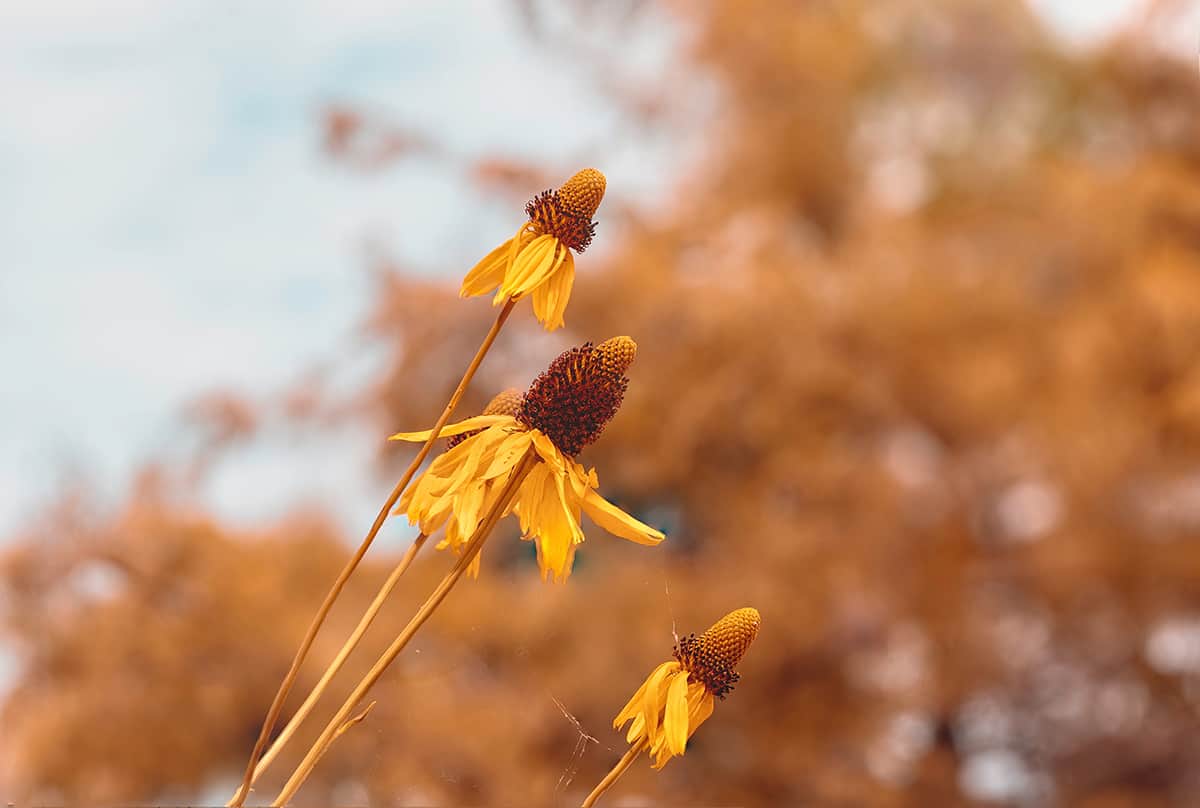
Giant coneflower, scientifically known as Rudbeckia maxima, is an excellent choice for attracting dragonflies. This herbaceous perennial showcases showy flowers that can grow as large as 6 inches in diameter, featuring golden petals surrounding a dark brown cone.
You’ll appreciate its drought tolerance, making it easy to maintain even during dry spells. The plant thrives in USDA Plant Hardiness Zones 4 to 8, and it typically grows to a height of 3 to 5 feet. To ensure successful growth, plant your giant coneflower in a location with full sun exposure and well-draining soil.
By incorporating giant coneflower into your garden, you’ll not only enhance its visual appeal but also create a welcoming environment for dragonflies. These captivating insects will help control pests, such as mosquitoes and flies, while adding interest and natural beauty to your outdoor space.
Joe-Pye Weed
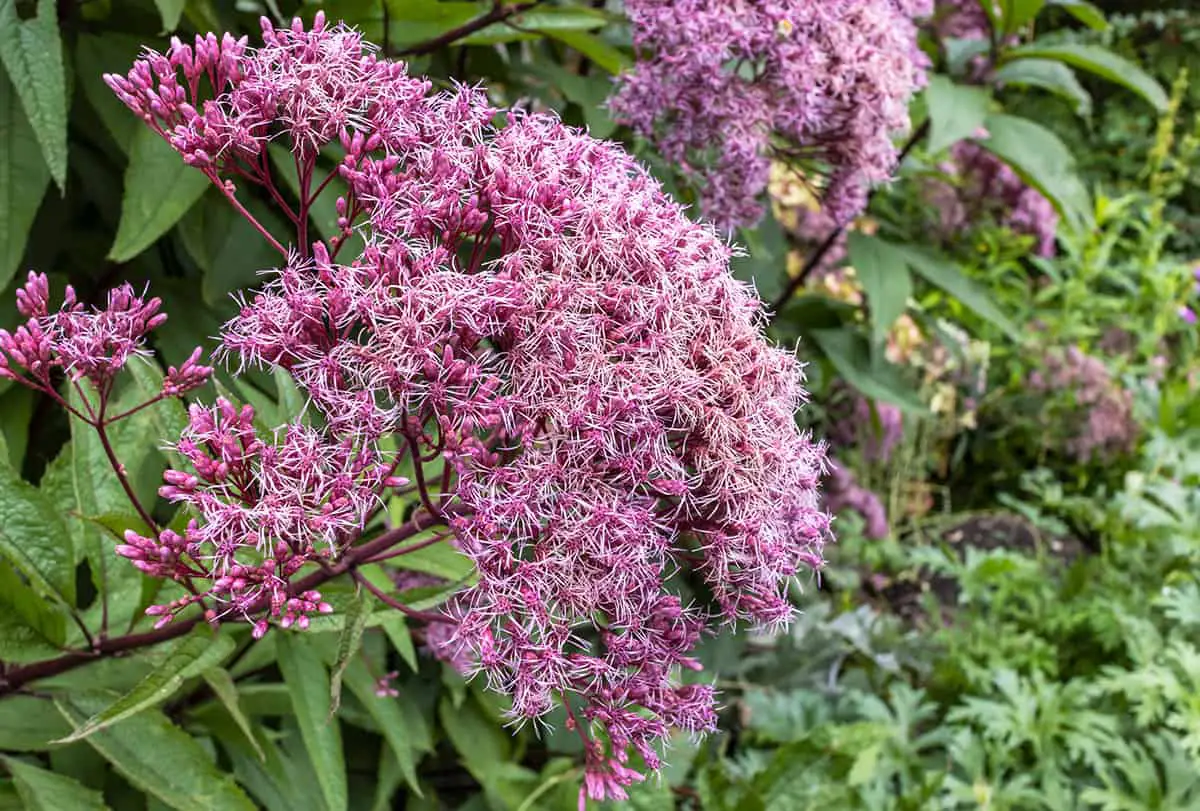
Joe-Pye Weed is a tall, native wildflower found in eastern and central North America. It thrives in open, sunny areas with moist soils, making it a perfect fit for a dragonfly-friendly garden. This perennial plant starts blooming in spring and continues well into fall, providing a long window of attraction for dragonflies.
When choosing where to plant Joe-Pye Weed, make sure you allot plenty of space. This robust and impressive plant can grow up to 6 feet tall, and its beautiful bloom clusters can be the size of a basketball. They have small, tube-like flowers in shades of pink or purple that attract a variety of pollinators, including dragonflies and butterflies.
To successfully grow Joe-Pye Weed in your garden, you should take note of its USDA plant zone, which is 4-9.
Meadow Sage
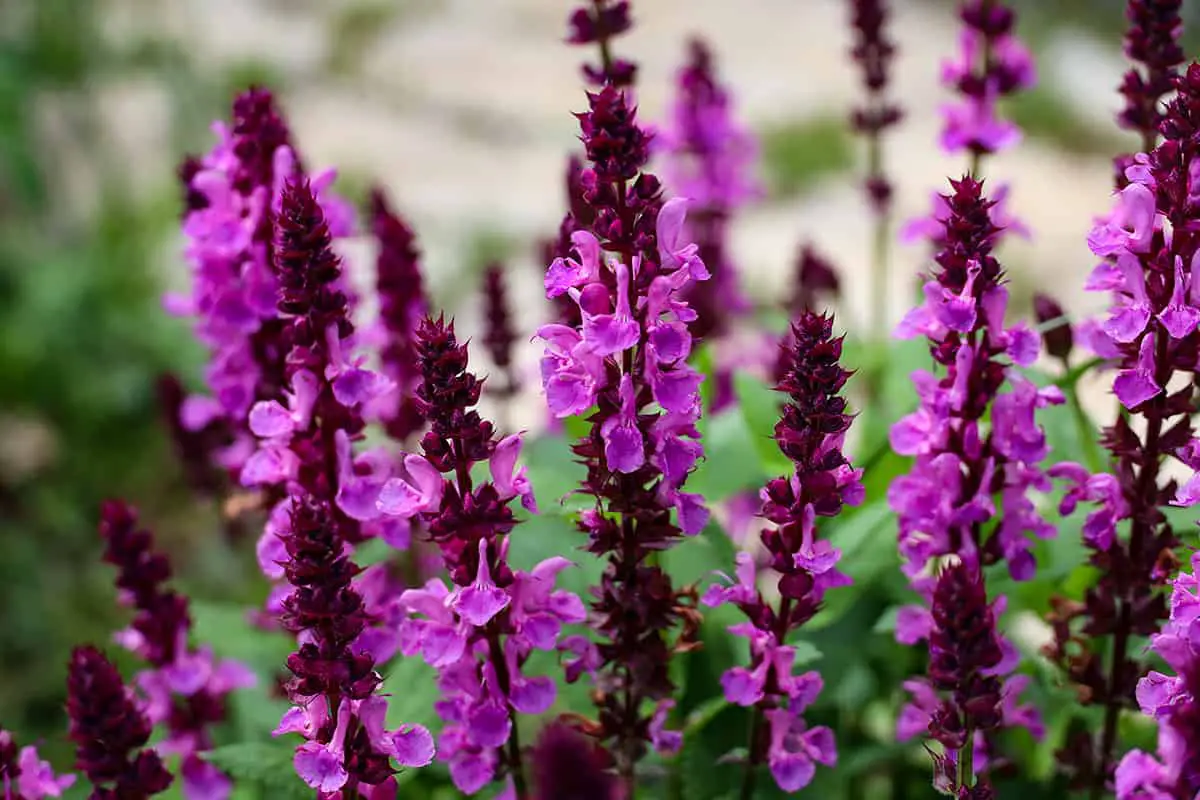
Meadow sage, also known as Salvia pratensis, is a plant that attracts dragonflies to your garden. This appealing ornamental plant has colorful flowers that bloom in spring and summer. These blooms not only enhance your garden’s aesthetics but also serve as a natural insect repellent.
A key feature of meadow sage is its ability to grow even without a pond in your yard. Its rich nectar attracts pollinators, including bees, butterflies, and, of course, dragonflies. Having these beneficial insects in your garden helps keep pests at bay and maintains a balanced ecosystem.
Meadow sage is relatively easy to care for and is resistant to common diseases. Additionally, it is a drought-tolerant plant, making it a suitable choice for low-maintenance gardens. With its vibrant colors and ability to attract dragonflies, meadow sage is an excellent addition to your garden.
Swamp Milkweed
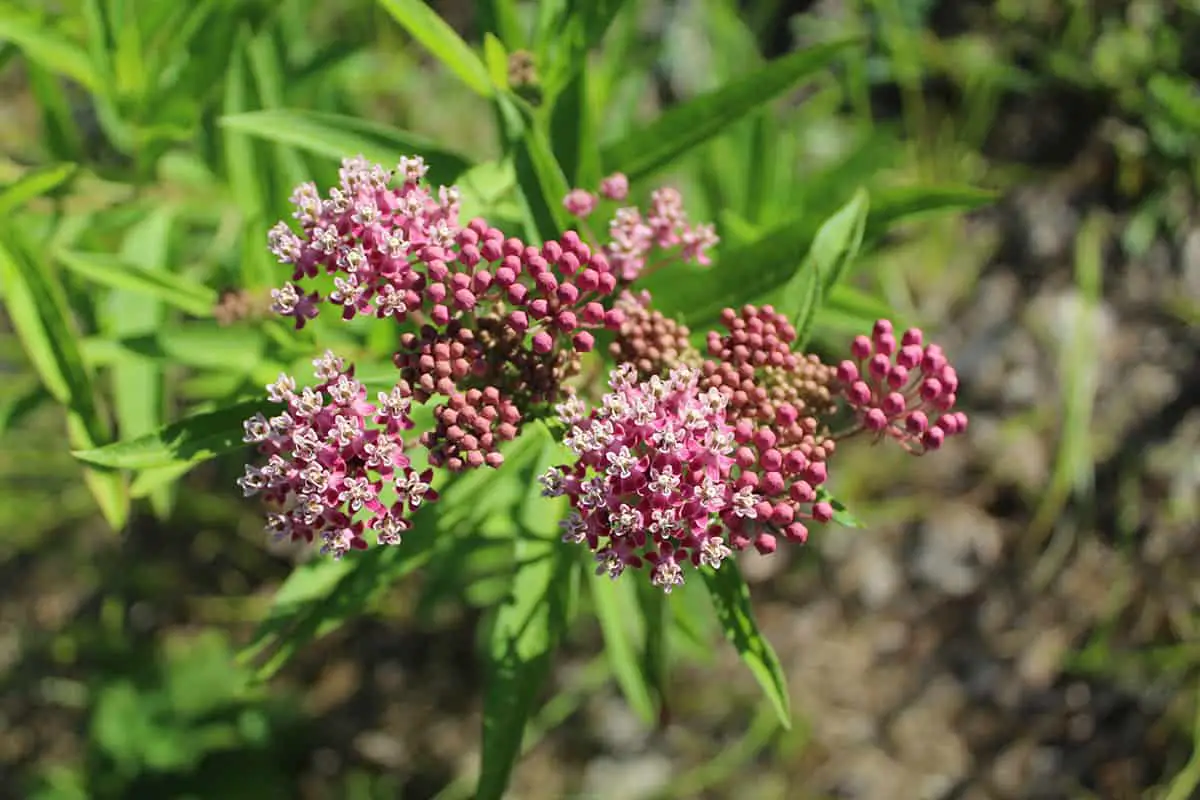
Swamp milkweed is a native wildflower that thrives in moist soil and ample sunlight. It forms clumps and grows 30 to 36 inches apart. This plant is perfect for attracting dragonflies due to its potential as a breeding ground.
Not only does swamp milkweed attract dragonflies, but it also works as a repellent for mosquitoes. In addition, it serves as the host plant for the Monarch butterfly caterpillar, making it essential for a pollinator-friendly garden. When in bloom, the stunning pink flowers add beauty to your outdoor space.
To increase dragonfly visits, plant swamp milkweed near ponds or water features. Dragonflies prefer to stay close to water as they lay their eggs in aquatic environments. Pair the milkweed with other plants like Siberian irises, which also grow well around water, creating a dragonfly haven in your garden.
Sweet Coneflower
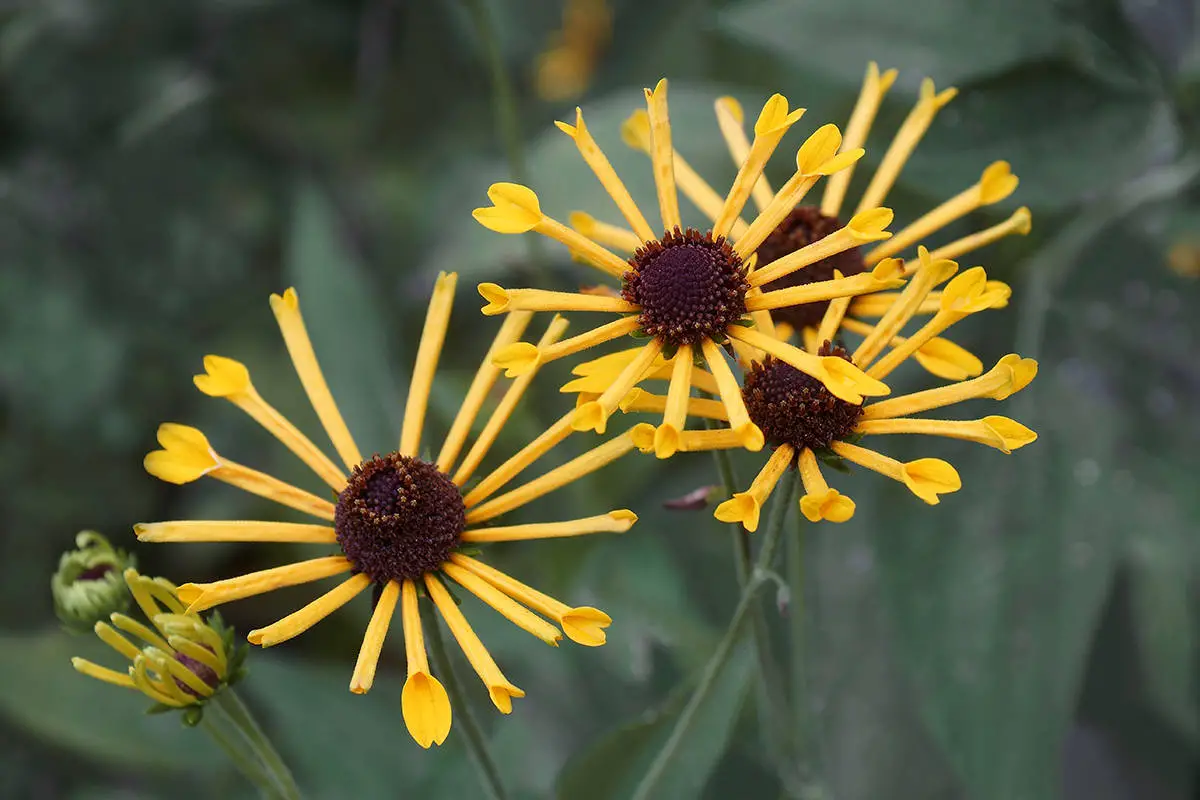
Sweet coneflower, also known as Rudbeckia subtomentosa, is a beautiful perennial plant that attracts dragonflies to your garden. This plant is native to the eastern and central United States and thrives in sunny or partially shaded areas. In addition to attracting dragonflies, the sweet coneflower also appeals to other pollinators like bees and butterflies.
The plant gets its name from the sweet, aromatic fragrance it exudes and the cone-shaped, yellow to golden flowerheads it bears. The flowers bloom from midsummer to early fall and can reach heights of 3 to 5 feet when fully grown. This makes it a perfect addition to your garden if you want to create a haven for dragonflies and other beneficial insects.
To grow sweet coneflowers in your garden, start by selecting an area that is well-drained and receives plenty of sunlight. The plant prefers rich, moist soil but can also tolerate some drought. Begin by planting seeds or small plants in spring, spacing them approximately 18 to 24 inches apart. Water regularly, especially during dry periods, to help establish a healthy root system for your coneflowers.
Water Lily
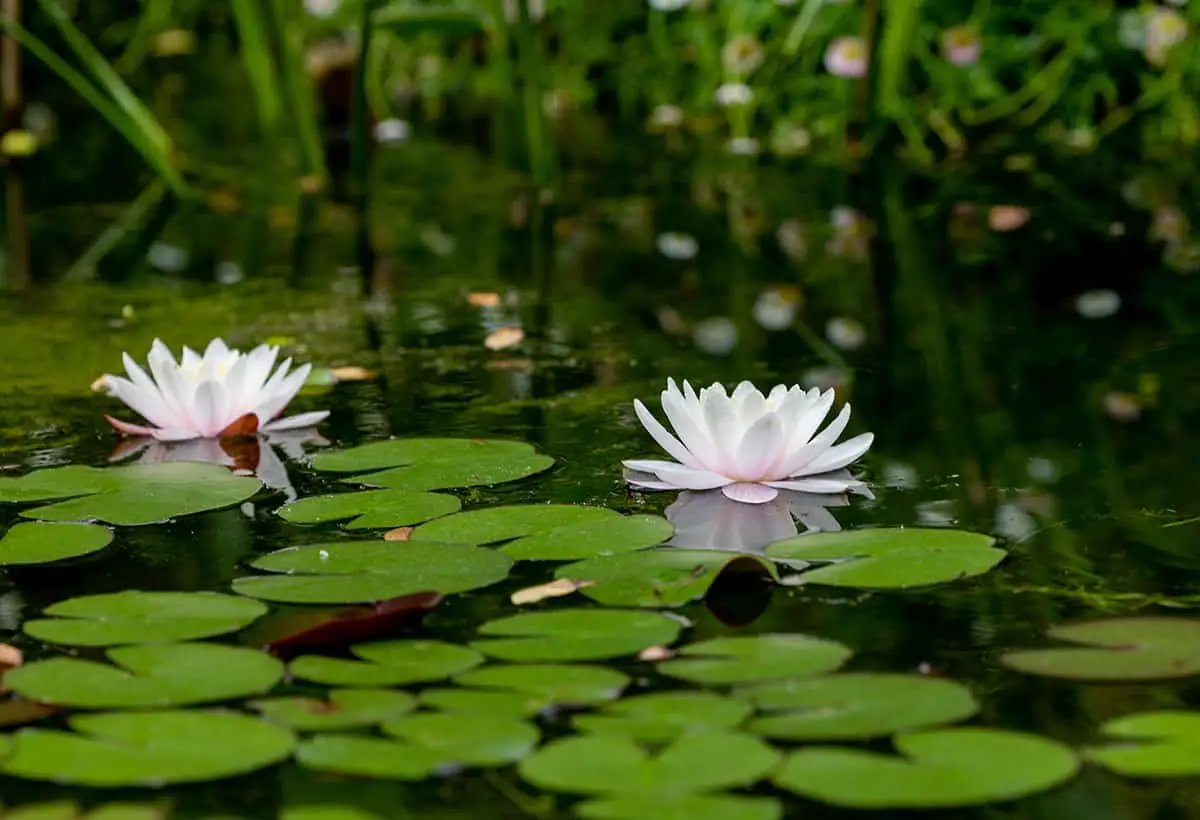
Water lilies are aquatic plants with floating leaves and vibrant flowers. They provide shade and shelter for dragonfly larvae, making them an ideal choice for attracting these fascinating insects to your pond.
The growth habit of lilies is particularly appealing to dragonflies. Since they like to perch on tall plants, the water lily can serve as a perfect resting spot for them. However, do keep in mind that deer and rabbits favor Asiatic Lilies, so you might need some measures to protect them from these herbivores.
When choosing which water lily variety to plant, consider one with vibrant colors since they can draw attention to dragonflies and make it easier for them to find your pond. Additionally, water lilies help in attracting other insects, like aphids, which are a favorite food source for dragonflies. In turn, this can help create a healthy environment for the dragonfly population.
To help your water lilies thrive, make sure they have enough room to grow since they can become quite large. Provide the right water depth and sunlight conditions, as well as keeping the pond clean, to ensure your water lilies remain healthy and attractive to dragonflies.
Water Horsetail
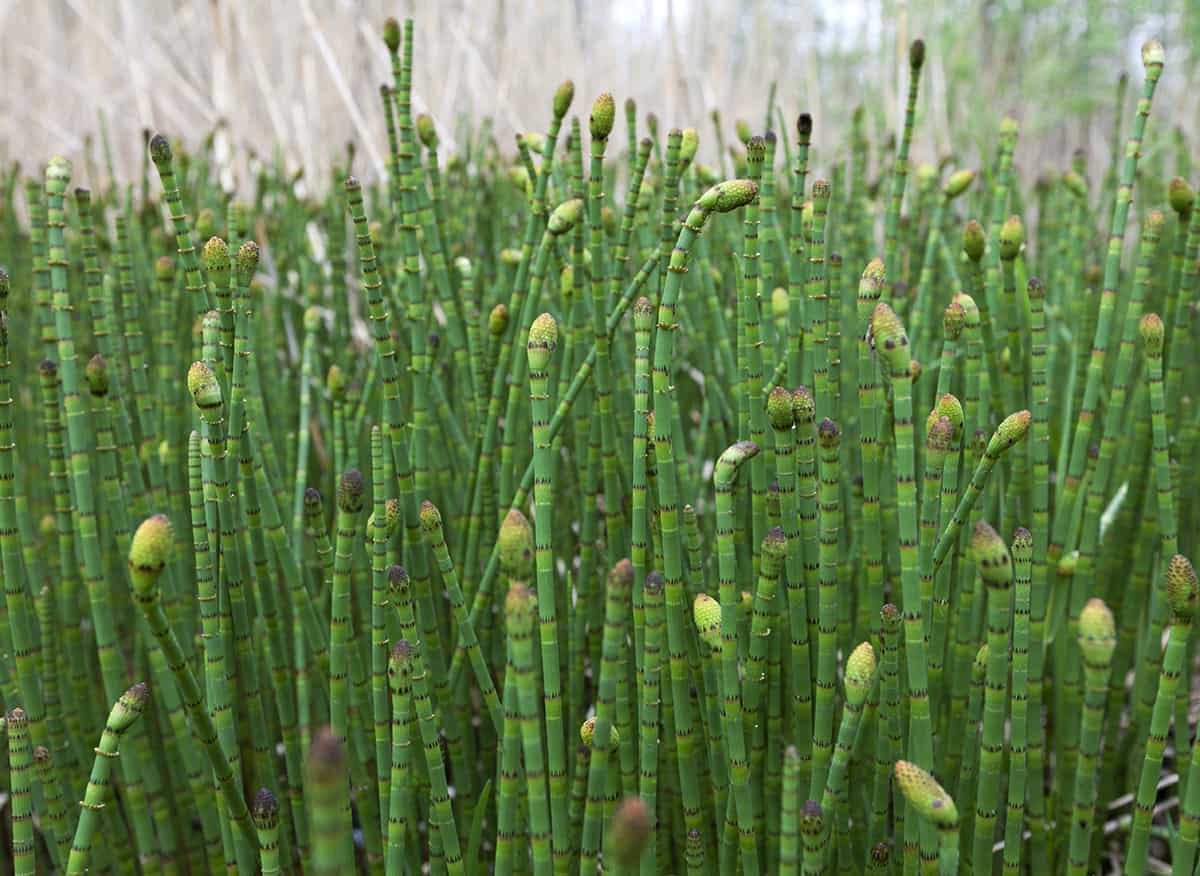
When creating a dragonfly-friendly environment, consider adding water horsetail to your pond or water feature. This aquatic plant, which thrives in zones 4 to 11, plays a key role in attracting dragonflies.
Water horsetail grows in tall, slim stalks that resemble miniature bamboo plants. This unique appearance not only adds visual interest but also provides shelter and a place for dragonflies to lay their eggs. Make sure to plant it in your pond, and soon green shoots will emerge above the water.
As a low-maintenance plant, water horsetail can reach up to 3 feet in height. Its vertical growth pattern creates a practical, space-saving choice for your pond. Moreover, with its ability to attract dragonflies, you’ll begin to notice a reduction in the mosquito population around your water feature.
Wild Celery
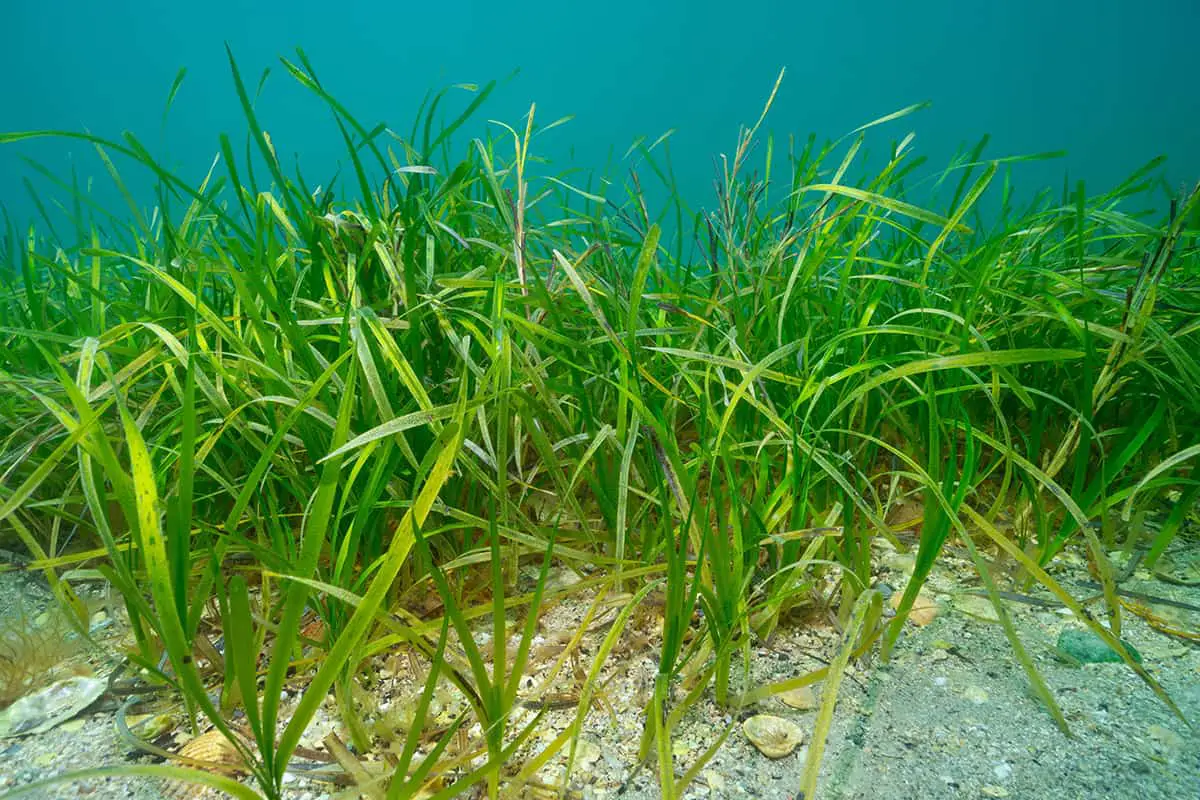
Wild celery, also known as eelgrass, is a great choice if you want to attract dragonflies to your garden. This plant thrives in shallow water, making it perfect for those who have a pond in their landscaping.
The unique feature of wild celery is its ability to provide a natural hiding place for dragonflies. As they grow and try to evade predators, the presence of wild celery offers them a secure spot to shelter. Moreover, this aquatic plant is where they often lay their eggs, ensuring the continuation of their life cycle.
To help your wild celery grow, ensure it gets plenty of sunshine and maintains a connection with the water. Keep in mind that it flourishes in clean, well-oxygenated water conditions. By including this wonderful plant in your garden, you contribute to a healthy ecosystem while attracting magnificent dragonflies.
Yarrow

Yarrow (Achillea millefolium) is a low-maintenance plant that attracts dragonflies. This perennial herb thrives in USDA Plant Zones 3-9. Known for its feathery foliage and delicate flowers, yarrow can be an excellent addition to your garden.
Yarrow blooms come in various colors, including white, yellow, and pink. These plants prefer full sun and well-draining soil. To ensure healthy growth, you can divide your yarrow plants every 2-3 years.
Some benefits of including yarrow in your garden are its drought tolerance and ability to attract beneficial insects. Among them, dragonflies are especially appreciated for their voracity in controlling mosquito populations.
